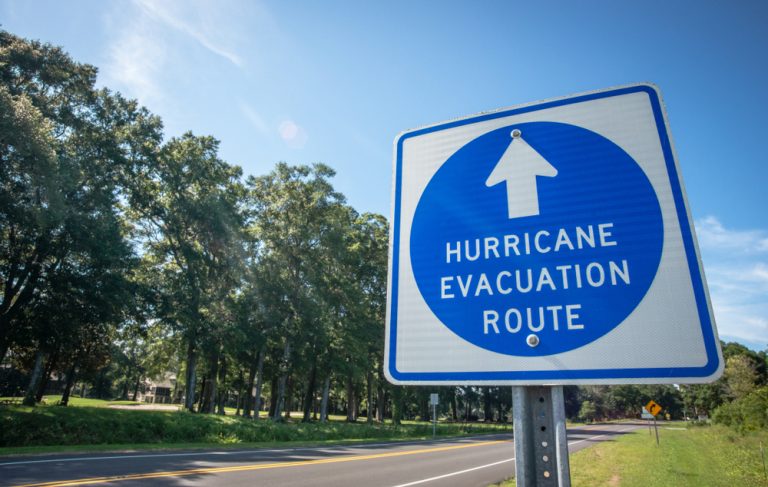Down the Rabbit Hole: Bankruptcy Practice in Uncertain Times
Down the Rabbit Hole: Bankruptcy Practice in Uncertain Times
The world — and particularly the U.S. economy — is navigating unprecedented and turbulent times. For bankruptcy professionals, it may feel as though we’ve fallen down Alice’s rabbit hole, where the rules we’ve long understood and accepted no longer apply. In this new reality, uncertainty defines both the global and American economic landscapes.
For example, the U.S. government has lost its AAA credit rating, leading to spiking Treasury yields. This raises borrowing costs at a time of record federal deficits. Compounding the issue, China — one of the largest holders of U.S. debt — is now engaged in an escalating trade war with no clear resolution in sight.
Tariffs have been levied on almost every major trading partner, particularly China. These actions are disrupting global supply chains and prompting corporate responses to the uncertainty surrounding the availability of goods. Economists report that the U.S. is now experiencing the highest levels of trade and economic uncertainty since 1901.
Meanwhile, Congress is gridlocked over budget and fiscal policy. While Republicans control of both chambers on Capitol Hill, there has been little indication of how bipartisan cooperation might unfold. Internal disagreements among Republicans have made fiscal resolution elusive, and the failure to address pressing issues — such as tax policy, debt management, and budget reform — only adds layers of uncertainty to an already shaky economic foundation.
American consumers are paying attention. Consumer confidence has sharply declined since the beginning of the year. Economists, who rely on such metrics to predict economic trends, are warning that this declining confidence could slow growth. Since consumer spending drives the majority of economic activity in the U.S., this trend is concerning.
It’s as though the fog of uncertainty has settled at ground level, obscuring the future for economists and financial experts alike. This haze puts businesses and financial managers in a precarious position. Even the Federal Reserve appears unsure of how to respond. At the beginning of the year, with low unemployment and decreasing inflation, the Fed and Wall Street had anticipated potential interest rate cuts. But instead, the Fed has taken no action and appears hesitant to do so.
The economic uncertainty is putting financial pressure on both individuals and companies, Additional, equity investors and financial lenders are uncertain over how to deploy capital and make prudent lending decisions. While some parts of the economy seem to be relatively stable, others are showing signs of distress.
The Sectors Feeling the Strain
Some sectors are more affected than others in these uncertain times. Healthcare, consumer retail, higher education, commercial real estate, and industries reliant on unskilled or semi-skilled labor — such as hospitality, farming, and construction — are particularly vulnerable.
Healthcare
The healthcare sector is facing serious challenges. Hospitals nationwide are struggling with a shortage of doctors and skilled nurses. Meanwhile the baby boomer generation ages, and the demand for medical care increases dramatically. Smaller and rural hospitals often cannot recruit and retain staff or achieve the economies of scale found in larger urban centers and become financially untenable. Added to this are the uncertain future of federal healthcare support and potential cutbacks in Medicare and Medicaid — factors that further complicate an already strained system.
Higher Education
Higher education is another area of distress. The Federal Reserve Bank of Philadelphia predicted that up to 80 college campuses could close this year. While for-profit colleges initially accounted for most closures, public and non-profit institutions have increasingly come under pressure. Rising operating costs and shifting demographics have driven down enrollments. For smaller schools that have long walked a financial tightrope, even a slight downturn in student numbers can prove fatal. Some schools, in an effort to address these challenges, have aggressively recruited international students. However, increased political scrutiny and a less welcoming atmosphere for foreign visitors are now discouraging international enrollment. Coupled with reduced state and federal funding for education, these trends spell trouble for the future of higher education.
Consumer Retail
The retail sector is also undergoing a massive transformation. The rise of Amazon has changed how Americans shop. The decline of traditional malls is a symptom of the challenges in the retail marketplace. Since the start of the year, the threat of tariffs has been increasing economic uncertainty. Rising prices are prompting consumers to tighten their belts — only worsening the challenges in this sector.
Commercial Real Estate
Commercial real estate is also being reshaped by changing consumer and work habits. Many businesses have embraced remote work, leaving entire office buildings in downtown areas vacant. Simply stated, many Americans now only need a phone and a good internet connection to do their job. Although some markets show signs of stabilizing, the hybrid work model is expected to persist, and presents ongoing challenges to the industry.
Labor-Intensive Industries
In the U.S. there is a growing shortage of unskilled and semi-skilled labor. Changing demographics have shrunk the native-born labor force, and increasingly restrictive immigration policies are limiting both legal and undocumented labor. The result is a shrinking labor supply. The shrinking labor force is coming at a time of prolonged low unemployment rates. Empirically, the Federal Reserve is telling us that the U.S. economy is near full employment. Anecdotal evidence of this labor shortage is already apparent: hotels can’t hire enough housekeepers, farmers are struggling to harvest crops, and homebuilders face shortages of roofing crews. In a consumer-driven economy, this lack of labor will increase costs and further cloud the outlook for these industries.
Navigating Through the Fog
Whether facing challenges in the market segments noted above or in a different industry, there are lessons and strategies that can guide distressed businesses through the haze of uncertainty. Professionals working in bankruptcy and financial restructuring are familiar with these truths.
Stop Digging
The first principle: if you’ve dug yourself into a hole, stop digging. Persisting with a broken business model or ineffective strategy won’t change outcomes. Quick fixes like payday loans or merchant cash advances may offer temporary relief but won’t lead to long-term recovery. Only meaningful change can do that.
Preserve Cash and Cut Unnecessary Expenses
Just as consumers might opt for spaghetti over prime rib during tough times, businesses must make smart, cost-effective choices. Preserving cash reserves can provide the flexibility to weather temporary disruptions—be they supply chain hiccups, labor shortages, or natural disasters. Moreover, adequate reserves allow businesses to take advantage of opportunities that may spur future growth.
Embrace Change
The world is evolving quickly. Twenty years ago, Blockbuster and Blackberries were ubiquitous — today, they’re relics. Now, we stand on the brink of an AI revolution. While its full impact is still unknown, what is clear is that change is coming. Businesses that embrace technological shifts and innovation are better equipped to adapt and survive. Business must be willing to embrace change and view problems as opportunities.
Redefine Success
Finally, it’s important to remember that wealth is not the only measure of success. In times of economic hardship, health and happiness must also be valued. Professionals working with distressed companies know that bankruptcy, while painful, is not the end. Advising clients to prioritize mental well-being and resilience can help turn adversity into an opportunity for personal and professional growth.
As Dorothy once said, “We’re not in Kansas anymore.” Likewise, the economic landscape is shifting beneath our feet. Uncertainty reigns, but with clarity of thought, sound financial strategies, and a willingness to adapt, businesses can not only survive — but thrive — on the other side of the rabbit hole.
Reprinted with permission from the June 2025 edition of ALM’s Bankruptcy Strategist, Volume 42, No 8, © 2025 ALM Media Properties, LLC. All rights reserved. Further duplication without permission is prohibited, contact 877-257-3382 or reprints@alm.com
This article also appeared in ALM’s Law.com on June 13, 2025.







